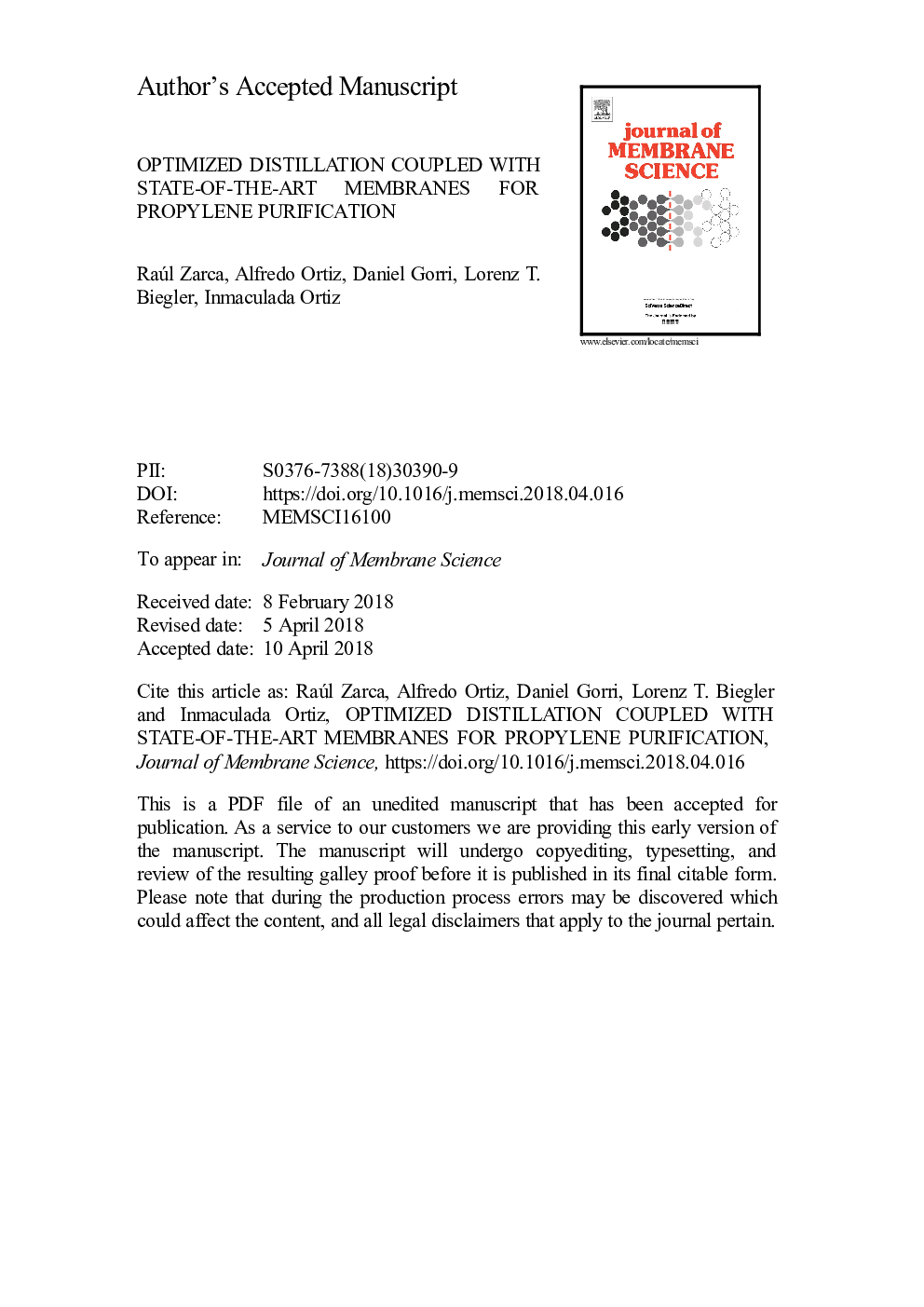| Article ID | Journal | Published Year | Pages | File Type |
|---|---|---|---|---|
| 7019883 | Journal of Membrane Science | 2018 | 33 Pages |
Abstract
The growing production of polyolefins, mainly polyethylene and polypropylene, currently demands increasing outputs of polymer-grade light olefins. The most commonly adopted process for the separation of olefin/paraffin mixtures is performed by energy intensive high pressure or cryogenic distillation, which is considered the most expensive operation in the petrochemical industry. The use of membrane technology offers a compact and modular solution for capital and energy savings, thanks to process intensification. In this work, we move one step forward in the design of hybrid propane/propylene separation systems, using computer aided modeling tools to identify economically optimal combinations of distillation and state-of-the-art membranes. A model is proposed to optimize a hybrid configuration, whereby the membrane performs the bulk separation and the distillation column is intended for the final product polishing, accounting for membrane investment cost and process operating expenses. The decision variables are the membrane area and the column reflux ratio, and the model is able to calculate the optimal feed trays. The upper-bound properties of selected membranes, which define their performance and reliability criteria, have been studied, benchmarking the economic evaluation against conventional distillation in order to assess the expedience of a hybrid system implementation.
Related Topics
Physical Sciences and Engineering
Chemical Engineering
Filtration and Separation
Authors
Raúl Zarca, Alfredo Ortiz, Daniel Gorri, Lorenz T. Biegler, Inmaculada Ortiz,
